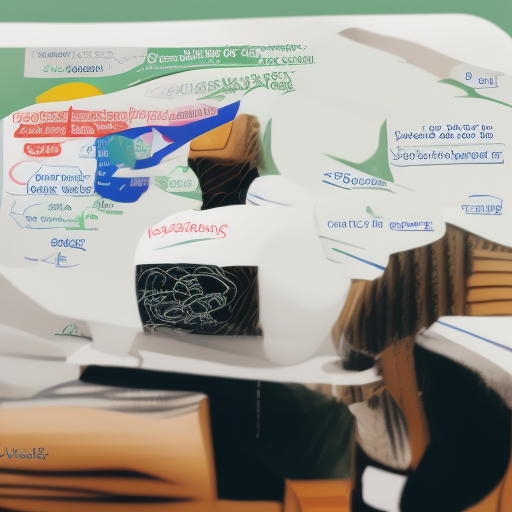Building Capacity in Nonprofits through Effective Training Programs
I. Introduction
Nonprofit organizations play a vital role in society by addressing social issues and promoting positive change. However, these organizations often face challenges in achieving their missions due to limited resources, expertise, and capacity. One way to overcome these challenges is through capacity building, which involves improving the skills, knowledge, and abilities of nonprofit staff and volunteers. In this article, we will explore how effective training programs can help nonprofits build capacity and achieve their missions more effectively.
II. Identifying Training Needs
To ensure that nonprofit organizations can effectively build their capacities through training programs, it is crucial to identify specific training needs. This involves assessing the current skills and knowledge of employees, as well as gathering feedback from staff and stakeholders. By understanding what areas need improvement, nonprofits can tailor their training programs to address these specific needs and create a more impactful learning experience.
III. Developing Effective Training Programs
To develop effective training programs for nonprofits, it is important to set clear objectives, choose appropriate delivery methods, and incorporate diverse learning styles.
When setting objectives, it is essential to consider the organization’s mission, vision, and strategic plan. The objectives should align with these documents and be specific, measurable, achievable, relevant, and time-bound (SMART). This ensures that the training program is focused on achieving the desired outcomes and can be effectively measured.
In terms of delivery methods, there are several options available to nonprofits. These include in-person training sessions, online courses, webinars, and mentorship programs. It is important to choose the method that best suits the needs of the organization and its staff. For example, if the training requires hands-on practice or interaction with peers, in-person sessions may be more effective. However, if the training can be delivered remotely, online courses may be a more convenient option.
Additionally, it is important to incorporate diverse learning styles into the training program. This means considering visual, auditory, and kinesthetic learners when designing the curriculum. This can be achieved through the use of multimedia presentations, group discussions, and interactive activities. By catering to different learning styles, nonprofits can ensure that all staff members have the opportunity to learn and retain the material.
IV. Implementing Training Programs
To ensure the success of a training program, it is important to provide adequate resources and encourage participation and engagement among staff members. This can include offering flexible scheduling options, providing childcare or transportation assistance, and creating a supportive learning environment. Additionally, it is essential to effectively communicate the purpose and benefits of the training to staff, as well as to establish clear expectations for their participation. By doing so, organizations can maximize the impact of their training efforts and ensure that staff members are equipped with the necessary skills and knowledge to achieve their mission.
V. Evaluating Training Effectiveness
Evaluating the effectiveness of training programs is crucial to determine their impact on nonprofit capacity building. Organizations must establish measurable goals and collect and analyze data to assess the success of their training initiatives. This involves determining whether the desired outcomes have been achieved and identifying areas for improvement. By evaluating training effectiveness, organizations can ensure that their efforts are yielding positive results and make informed decisions about future training programs.
VI. Sustaining Learning and Impact
To ensure that the training programs have a lasting impact on nonprofit organizations, it is important to focus on sustaining learning and impact. This can be achieved through several strategies:
1. Reinforcing new skills and knowledge: Nonprofits should provide opportunities for staff to continue practicing and applying the skills they have learned through training. This could include ongoing coaching, mentoring, or peer support.
2. Aligning training with organizational goals: Nonprofits should ensure that their training programs align with their overall mission and goals. By doing so, they can ensure that the training is relevant and meaningful to the organization.
3. Continuous improvement: Nonprofits should regularly assess the effectiveness of their training programs and make adjustments as needed. This could involve gathering feedback from staff and stakeholders, tracking performance metrics, and analyzing data to identify areas for improvement.
4. Collaboration and partnerships: Nonprofits can leverage collaborations and partnerships with other organizations to access additional resources and expertise. This could include sharing best practices, joint training initiatives, or partnering on research projects.
5. Professional development opportunities: Nonprofits should provide ongoing professional development opportunities for their staff, including training, workshops, and conferences. This will help to keep staff up-to-date with the latest trends and best practices in their field.
By focusing on sustaining learning and impact, nonprofits can ensure that their training programs have a lasting impact on their organization and the communities they serve.
VII. Overcoming Challenges
One of the biggest challenges that nonprofits face when it comes to implementing effective training programs is limited budgets and resources. This can make it difficult to provide adequate resources for training, such as materials, equipment, and compensation for staff who participate in training. Additionally, some organizations may resist the idea of investing in training because they believe it will take time away from their core mission or because they don’t see the immediate benefits.
Another challenge that nonprofits may encounter is finding the right balance between providing general training and tailoring it to the specific needs of the organization. It’s important to assess the current skills and knowledge of staff members and gather feedback from them and other stakeholders to identify areas where training is needed most. However, this can be difficult if staff members have different opinions on what they need or if there is a lack of clarity around the organization’s goals and priorities.
Despite these challenges, there are strategies that nonprofits can use to overcome them and successfully implement effective training programs. For example, they can work with partners or collaborate with other organizations to share resources and reduce costs. They can also focus on providing targeted training that addresses specific skill gaps and aligns with the organization’s overall strategy. By doing so, nonprofits can ensure that their training programs are both effective and sustainable over the long term.
VIII. Conclusion
In conclusion, building capacity in nonprofits through effective training programs is essential for organizations to achieve their mission and improve their impact. By identifying training needs, developing effective programs, implementing them successfully, and evaluating their effectiveness, nonprofits can ensure that their staff have the necessary skills and knowledge to excel in their roles. However, there are challenges that need to be overcome, such as limited budgets and resistance to change. Despite these obstacles, nonprofits must continue to prioritize training and invest in their staff to create lasting positive change. We encourage all nonprofits to take action and implement effective training programs to build their capacity and enhance their impact.


0 Comments